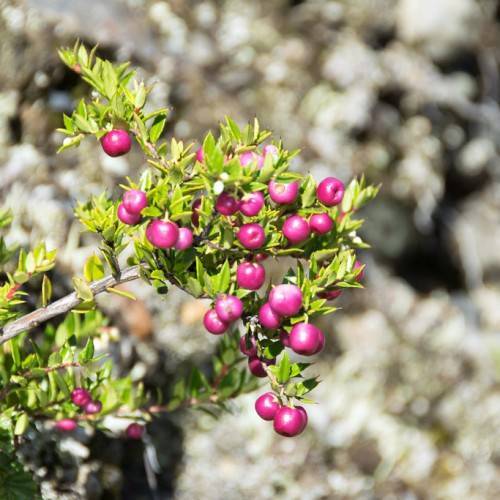
pernettya; prickly heath
Gaultheria mucronata
Cycle:
Herbaceous Perennial
Watering:
Minimum
Hardiness Zone:
4
Flowers:
Flowers In Summer
Sun:
Full sun
Soil:
Well-drained
Fruits:
Fruits In Autumn Ready In Summer
Leaf:
Yes
Growth Rate:
High
Drought Tolerant:
Yes
watering
Water blanket flower when the top 2-3 inches of the soil are dry to the touch. In hot, dry weather, it may need to be watered once a week. When direct rainfall is not sufficient, supplement with 1-2 inches of water from a watering can or a garden hose. Try not to over-water, as too much water can cause the root system to become waterlogged. Allow the soil to dry out completely between watering sessions.
sunlight
The blanket flower (Gaillardia cvs.) prefers to be grown in a location that receives full sun for a minimum of 6-8 hours a day. When planted in a location with partial shade, the plant will need to receive a minimum of 4-6 hours of direct sunlight per day to thrive. Placing the blanket flower in a spot that does not get enough sunlight will cause the plant to produce fewer flowers and become lanky and leggy.
pruning
Blanket flower (Gaillardia cvs.) is a low-maintenance, heat tolerant perennial that flowers throughout much of the summer. Pruning can be beneficial to encourage vigorous growth, neat form and future blooms. Pruning should be done in stages, first cutting in early spring (early March or April) and then pruning again in midsummer (July or August). In early spring, pruning can help remove dead winter growth and improve air circulation and sunlight penetration. Cut the old flower stems and seed heads back to the ground. Also cut away faded foliage and any damaged canes or branches. In midsummer pruning is beneficial for removing spent flowers and maintain size and shape. Prune lightly, only removing spent flower heads and a third of the longest stems. Also take off any dead, damaged, or weak branches during this time. Blanket flower can also benefit from tip pruning throughout the growing season. This is where the tips of each stem is pinched off (about 1 inch of growth). This encourages side-shoot growth, leading to more flowers. Finally, it is important to fertilize before and after pruning to promote strong and healthy growth.
